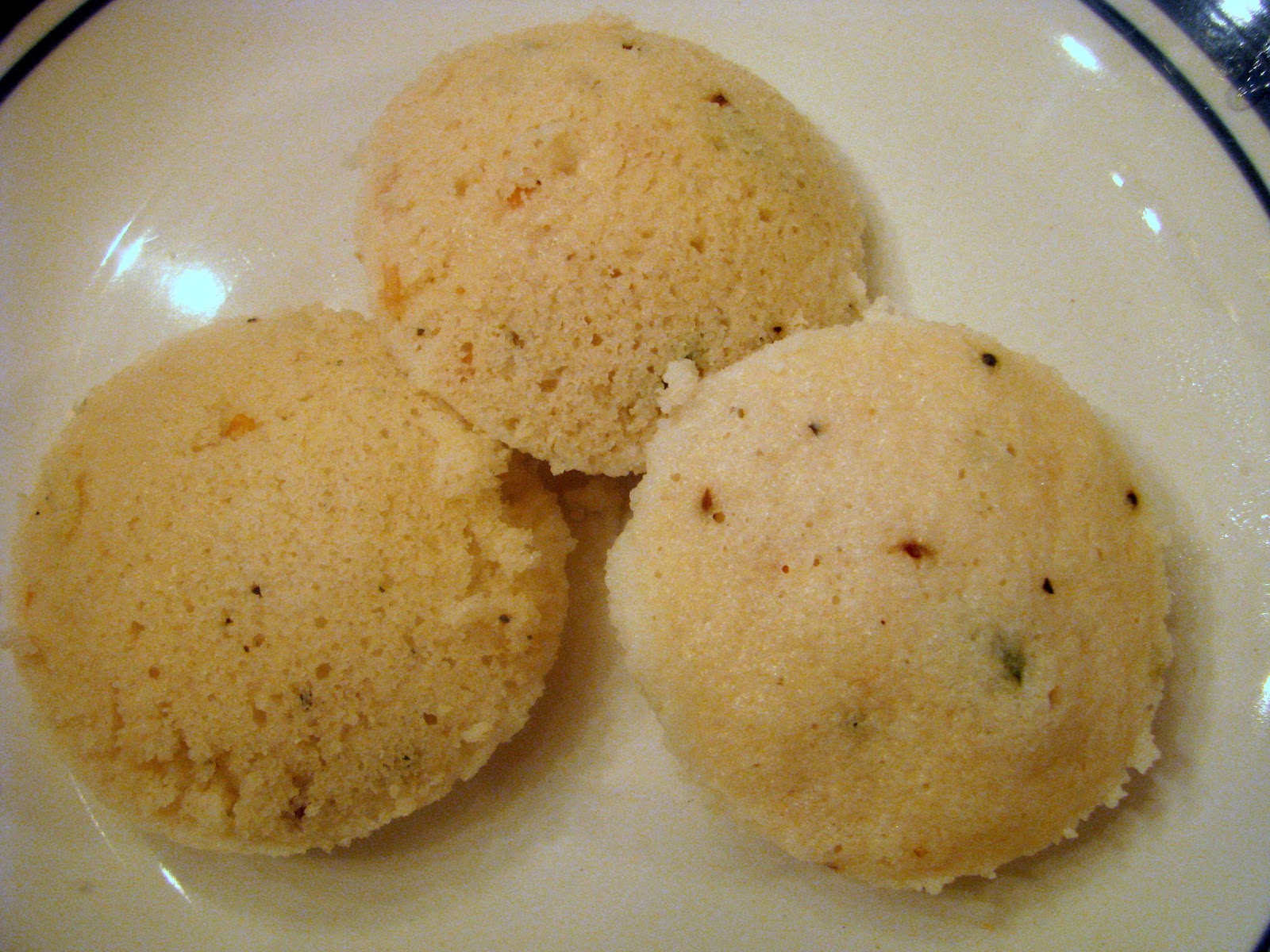Idlis
are a staple in South India. Not surprisingly, there are several
variations of Idli around the state. One of them is the popular
Kanchipuram Idli. The same basic ingredients are used to prepare the
batter, but the measurements are slightly different. The batter is also
spiced with ginger, chillies, nuts, and other spices to give an extra
layer of texture, crunch, and flavor.
Thanks again to my in-laws for preparing this awesome idli!
Thanks again to my in-laws for preparing this awesome idli!
Ingredients (serves 6):
- 2 cups raw white rice
- ¾ cup whole, de-husked, urad dhal / black gram dhal / ullundhu
- 2 teaspoons salt (or as needed)
- 1 tablespoon sesame oil (and a little more for greasing the idli plates)
- 1 teaspoon black mustard seeds
- 1 teaspoon split urad dhal / ulutham paruppu
- 1.5 teaspoons minced ginger
- 1-2 green chillies, minced
- 1 teaspoon bengal gram dhal / kadala paruppu
- 1 teaspoon ghee / clarified butter
- 1 teaspoon jeera / cumin seeds
- a few broken cashew nuts
- a few sprigs of washed and cut coriander leaves / cilantro (optional)
Preparation:
- Soak the urad dhal / black gram dhal in water for 1-2 hours. When soaked, drain the water and grind it in a blender with about ½ cup water (more or less) till it grinds to a smooth, fluffy batter, similar to its consistency while making plain old idli batter. . The consistency of urad dhal batter should not be too thick nor too runny. If you lift the batter with a spatula and point it down, the batter shouldn’t run or plop down instantly. It should be a fluffy lump that stays on the spatula and very slowly crawls down.
- Onto the rice now. Grind the rice (with no water) in a blender till it is ground to the consistency of regular sand (not soft beach sand) with small, slightly coarse granules. It should be of the consistency of rava (semolina) that is not coarse, yet not as fine as flour.
- Mix the ground rice with the urad dhal batter and add about 1 cup of water (more or less) to create an even batter that runs down in ribbons when poured into a deep and wide vessel. Add salt and mix the batter well with your clean hand (preferably).
- Loosely close the batter and let it sit on the kitchen counter for about 20-24 hours (if living in a cold place), or about 8-12 hours if living in a hot, humid place. You are allowing the batter to rise and ferment a bit. The batter doesn’t ferment as much as regular idli batter, but it does ferment a bit and turns slightly brown in color. The consistency of the batter is shown below. It is slightly thicker than regular fermented idli batter. When poured, the batter should plop down creating wide, rough ribbons. If you feel the batter is too thick, dilute with a little water.
- Before preparing the idli, add the spices. Heat a tablespoon of sesame oil. When hot, splutter mustard seeds. Then add ginger, green chillies, split urad dhal and bengal gram dhal and fry on medium heat until the dhals begin to change color. Add to the batter.
- In a teaspoon of ghee, fry cumin seeds and cashew nuts until the nuts turn golden. Add to the batter and mix gently. If you’re adding coriander leaves, add them now and mix gently.
- Using sesame oil, grease idli plates (specialty plates with specific spherical depressions to shape and cook the batter). Ladle the batter onto the plate/depressions leaving some room for the batter to rise and puff. Place the plates in a boiling pot of water such that the water is well below the bottom-most idli plate (else your bottom idlis will reduce to soup). Steam on high-heat for 10-12 minutes until the idlis are cooked and puffed.
- Allow the cooked idlis to rest for 5-10 minutes. Then gently scoop out the idlis.
 |
| Consistency of the fermented batter |
Serve with a side of chutney, or any spicy gravy or powder.
The coarse texture of the rice gives the idli its unique softness. All the nuts and spices make this treat an aromatic feast.


No comments:
Post a Comment
Thanks for leaving a comment! I appreciate it.
Note: Only a member of this blog may post a comment.